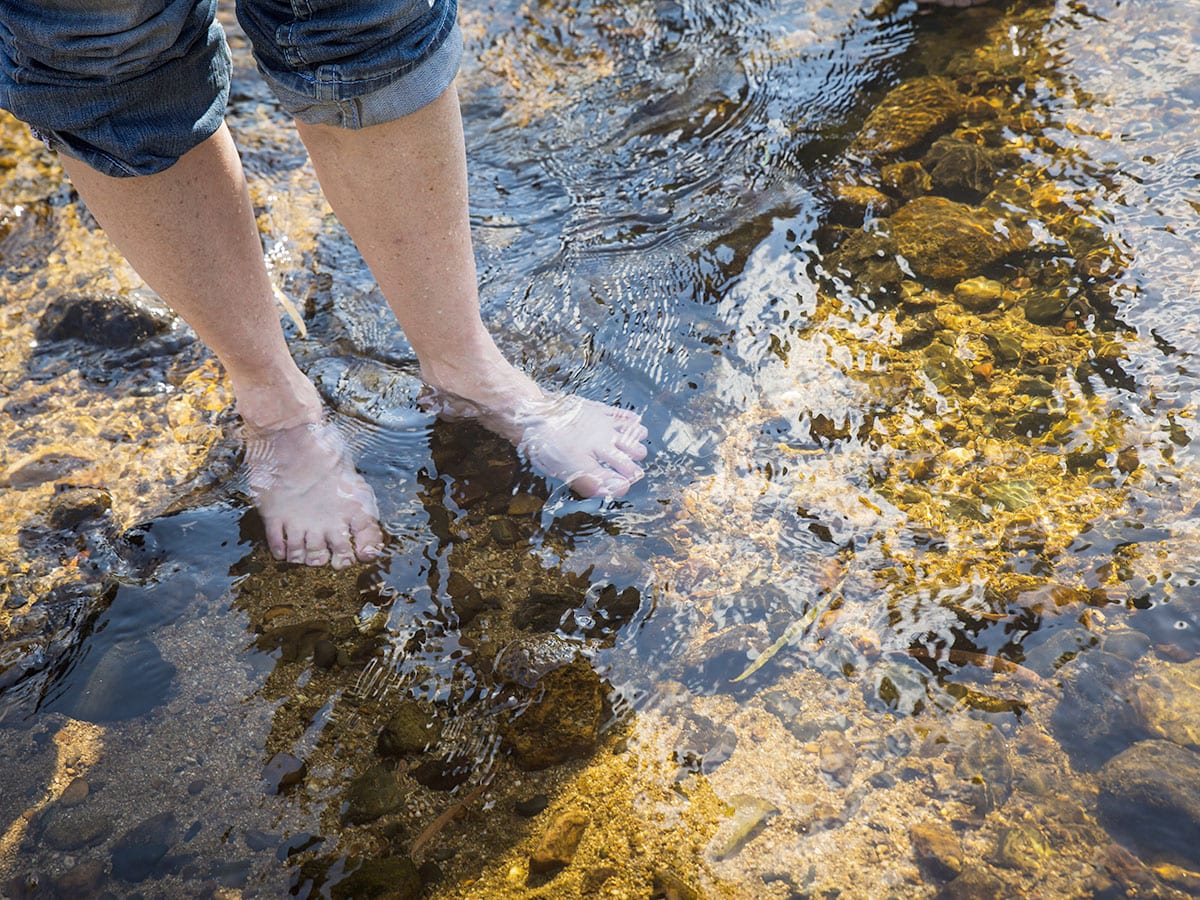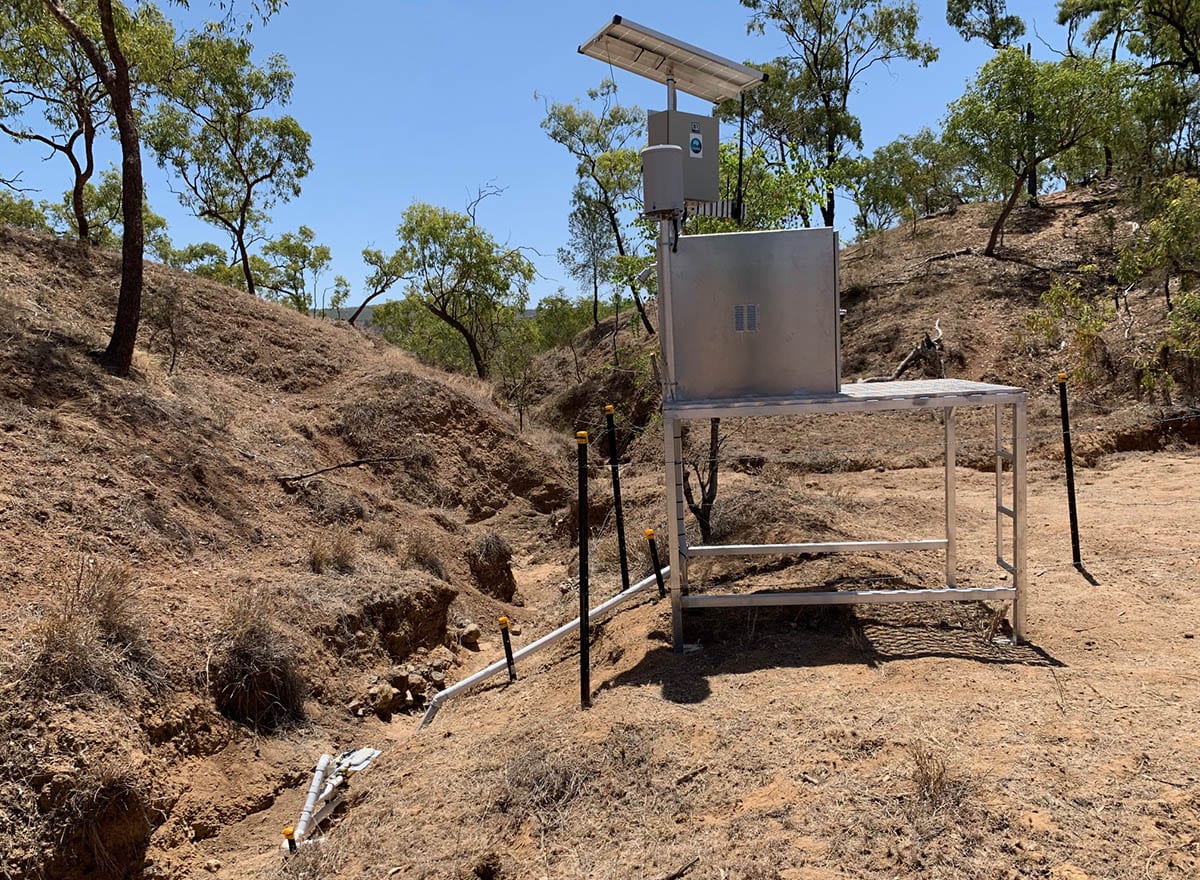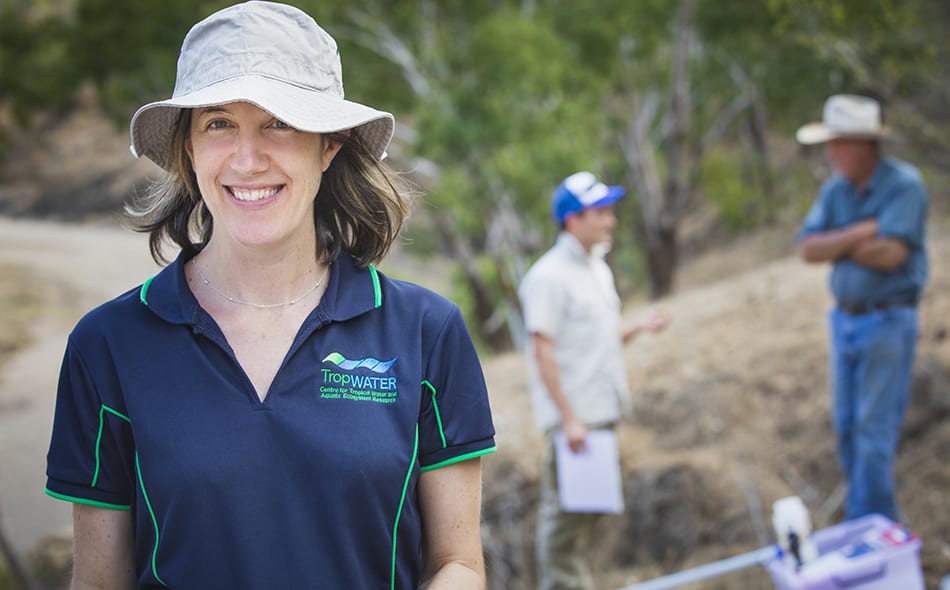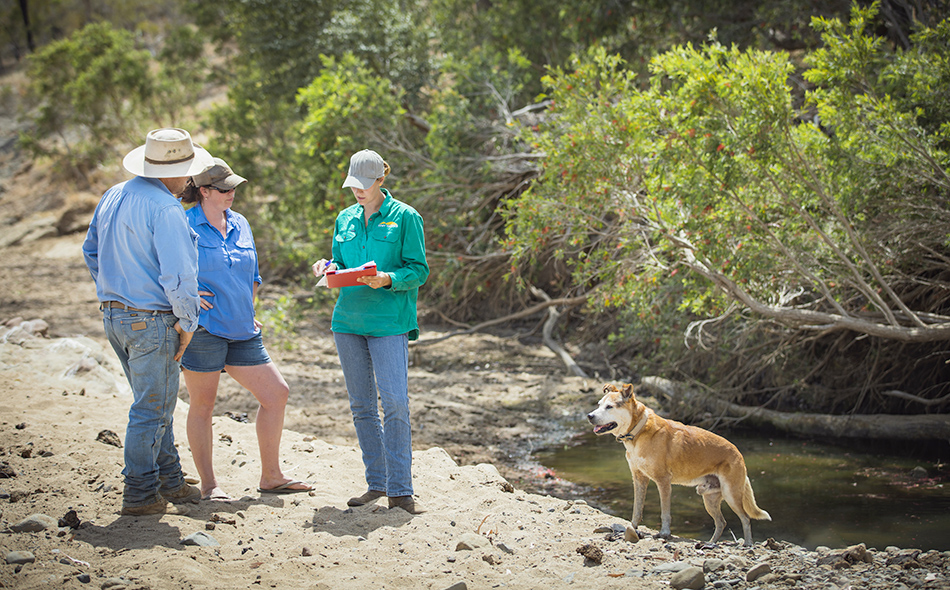
Monitoring and evaluation is critical to the LDC project
The LDC Monitoring and Evaluation Strategy has been developed to help keep track of milestones and monitor progress towards pre-defined project outcomes.
Funding for the monitoring and evaluation of the project comes from the Department of Environment and Science (DES), and they want to make sure the project provides graziers with the tools and resources to implement sustainable land management decisions on their properties.
It’s a win-win situation. If landholders keep valuable topsoil on their land, it will provide good pasture cover to grow and feed cattle. It also means less runoff into waterways, therefore improving water quality for the Great Barrier Reef.
To measure this, LDC has a suite of tools to suit each property project. They include looking at the general land condition and soil types, mapping, before and after photos, water sampling, and soil sampling.
The LDC is also monitoring the effectiveness of gully remediation activities. Fully-automated systems collect water quality samples which are analysed for characteristics of the discharge, suspended sediment concentration and load measurement.
It’s exciting because the LDC project can try new ideas and test a wide range of land remediation and management practices. Monitoring these activities is crucial to determining which techniques succeed, which techniques are cost effective, and it allows successful projects to be replicated.
Grazier Peter Le Feuvre, NQ Dry Tropics LDC grazing support officer Sheridan Callcott (centre) and Christine Jones.
CSIRO has installed monitoring stations at two gullies on Glen Bowen Station – the treatment site that is undergoing remediation and a control site for reference.
Monitoring and evaluation is an important part of the LDC project because it collects data as we go. It also makes sure the right people and organisations work together to analyse the results and evaluate the project’s ability to meet the overall goal:
The BBB community is focused on implementing and evaluating a range of innovative tools and practices for enduring sustainable and productive land management practices to reduce sediment and nutrient runoff.
The data collected and analysed through M&E includes biophysical data (stuff from the environment) such as soil samples. The soil characteristic results are used to inform remediation designs, and are also used to determine sediment particle size and increase confidence levels in erosion estimates at gully sites.
When coupled with a range of other biophysical monitoring data, such as:
- ground cover and vegetation assessments;
- water quality samples;
- historical photos;
- LiDAR (Light Detection and Ranging);
- biodiversity counts; and
- infiltration measures,
The LDC project is able to look across a suite of key indicators to detect change and learn from the trials taking place. The results are then shared with multiple stakeholders, and are adapted as the project progresses.
This component of M&E informs our progress towards improved land management outcomes and importantly, improved water quality leading to the Great Barrier Reef.
M&E is also collecting social data. This data includes participant satisfaction and value from events and training, as well as the occasional survey or small group reflection session to better understand the barriers and enablers relevant to the BBB.
When coupled with attendance and engagement numbers it allows the LDC project to plan future events, projects and training so that they are tailored to the needs of locals.
This component of M&E informs our project’s progress towards supporting landholders with facilitating change if required, and strengthens the culture of stewardship throughout the BBB catchment.
All of the above is not possible without a strong network of passionate landholders, technical experts and scientists. This network assists the LDC with data collection, analysis and evaluation.
In late 2019 we received an LDC Water Quality Progress Report (led by C2O Consulting, TropWATER and CSIRO), and an LDC Stewardship Report (led by River Consulting) that synthesised the data collected thus far.
Preliminary cost effectiveness reports (a tool developed by CQU and reported with support from Qld DAF) have also been undertaken on the majority of completed on ground LDC projects in year two (this year). A Year 2 Survey Analysis (led by JCU and Eberhard Consulting) has also been completed.
These reports inform project management. An external interim evaluation has also taken place (led by First Person Consulting) with a detailed report and recommendations, ensuring that transparency and continuous improvement stays at the forefront of adaptive project management.
Content of these reports has been used in the LDC Performance Report submitted to our project investors (Queensland Government) and the Major Integrated Project (MIP) Steering Committee.
The steering committee provides progress oversight and endorsement role, providing advice to Department of Environment and Science and the project managers on matters impacting the MIP (locally known as Landholders Driving Change).
M&E data and results are also shared back to our landholders in the BBB community. Property owners of monitored landscape remediation sites received visits from CSIRO discussing early indications of biophysical change over the short timeframes we have had so far.
In January and February this year patchkey landholders received a property report and visit explaining the results to discuss what was seen at the sites on their properties, and the community water monitoring group were presented with a results document in Collinsville in June from the sample collections they had undertaken to date.
Closing the feedback loop and sharing the learnings with landholders is as equally as important, if not more of than sharing the learnings more broadly. As custodians of the land, this information supports our community to make better and more informed decisions moving forward.
Copies of reports mentioned in this article may be available upon request to the LDC Project Director and LDC Project Manager.





